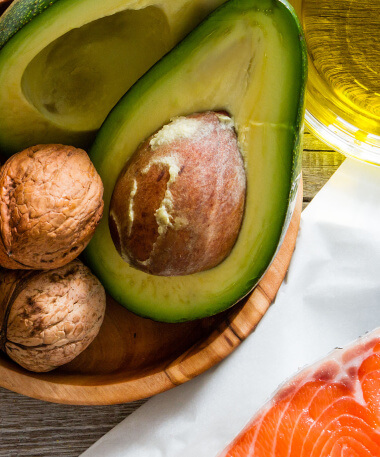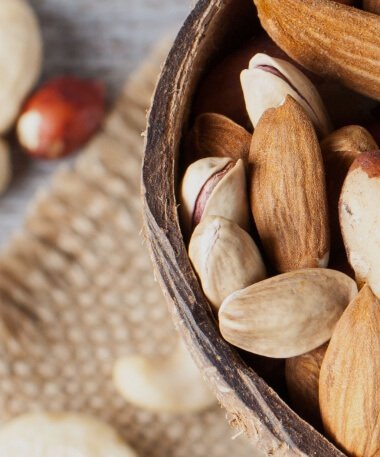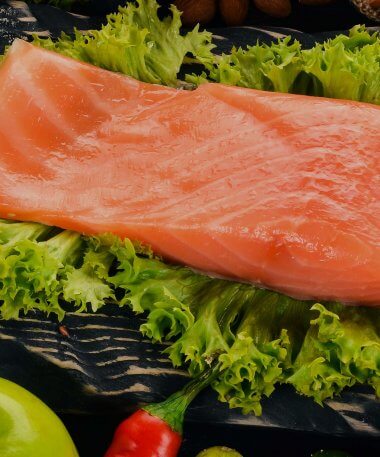By now, you’ve likely heard of – if not tried – the ketogenic diet. This popular diet is described as a ‘higher fat, moderate protein, very low carbohydrate’ eating regimen. The ultimate goal is to reach a metabolic state called ketosis, which is the point where the body switches from burning glucose to burning fat for energy.
This golden oldie has been around since the 1920’s.
Originally developed in the US for patients with epilepsy, the keto diet was based on a therapeutic nutritional approach with a physiological and biochemical basis. It was discovered that an elevated level of ketone bodies in the blood – the state of ketosis – reduced the frequency of epileptic seizures.
Simply put, our bodies don’t make glucose – instead, we get glucose from food and then store it for short periods to be used for energy. When glucose stores start to run out, we turn to burning fat for energy.
Individuals on a keto diet consume less than 50 grams of net* carbs per day. This ultra-low carbohydrate intake thus drives the body to create ketone compounds from stored body fat and fats in the diet. And these fats are now used for energy.
*Net carbs = the number of carbs in a food AFTER dietary fiber grams are deducted
Most folks choose the keto diet for weight loss purposes.
But there is a myriad of purported health benefits that extend far beyond weight loss. These include:
- increased energy
- improved mental clarity
- better digestion
- less hungry/fewer cravings
- improved metabolism
- balanced blood sugar/cholesterol levels
- decreased inflammation
And if that’s not enough, following a healthy keto diet may also:
- Decrease the risk of Type 2 diabetes
- Decrease the risk of heart disease
- Protect against cancer
- Fight cognitive impairment and neurological disorders
There’s more than one way to keto.
The classic ketogenic diet is restrictive and therefore may be difficult for most to follow. But there are less limiting adaptations that are more appealing and manageable. Examples include:
- Modified standard keto – this easier-to-follow, somewhat relaxed version consists of: 65-85% fat, 15-35% protein, and up to 10% carbs.
- Cyclical keto – this carb-up model involves following the standard model most days, and then increasing carbs (50-100g) one or two days per week. The higher-carb days may help increase metabolic flexibility by training the body to go in and out of ketosis, and is often a go-to for athletes and body-builders, and can be used to support female hormones.
- Vegetarian or Vegan keto – yes, you can follow a plant-based keto diet! Fats in plant-form are plentiful (eg. coconuts, olives, avocados, nuts and seeds); and vegetarians can eat eggs and dairy for protein, while vegans can enjoy tofu and tempeh, for example.
What do I eat?
The fundamental rule of any dietary lifestyle is to make healthy food choices. A standard keto diet includes:
- Healthy fats – eg. olives/olive oil, coconuts/coconut oil, grass-fed butter, ghee, nuts and seeds (especially pili nuts, macadamia nuts, flax, hemp and pumpkin seeds); avocado (learn more about “good fats“)
- Non-starchy vegetables – eg. leafy greens, asparagus, cucumbers, zucchini, broccoli, cauliflower, Brussels sprouts, fresh herbs
- Protein – eg. grass-fed meat, pasture-raised poultry, pastured eggs, wild-caught fish, full-fat dairy
Be sure to drink plenty of water and herbal teas. And avoid processed foods, sugary drinks, desserts, grains and starches. Typically, fruit is minimal (or avoided) on a keto diet due to higher sugar content but small amounts may be considered (eg. limes, lemons, berries) and perhaps more on carb-up days if following a cyclical keto diet.
Check in with your doctor first and always pay attention to your body.
The ketogenic diet – or even a modified keto diet – may not be for everyone, so be sure to check in first with your healthcare practitioner. And always, always listen to your body, especially when you make changes to your diet or lifestyle.
Create your keto shopping listJulia Denker has a passion for wellness, educational background in psychology and nutrition, and administrative leadership experience. She knows that we can all live and work smarter by making small but impactful lifestyle changes, including rethinking our food choices. Understanding bio-chemical individuality is key, and she guides clients on cueing into their bodies to craft a nourishment plan that works.



